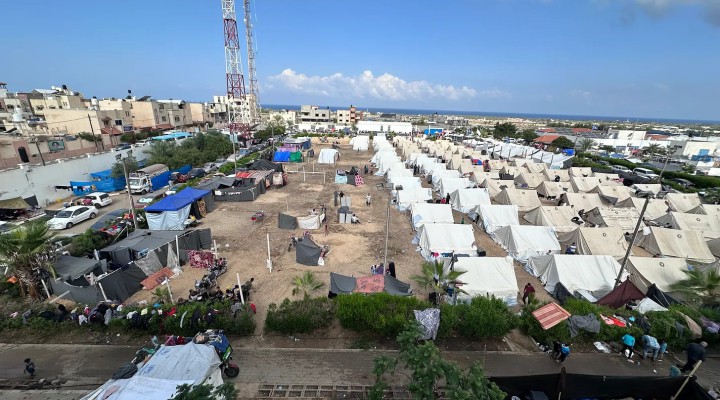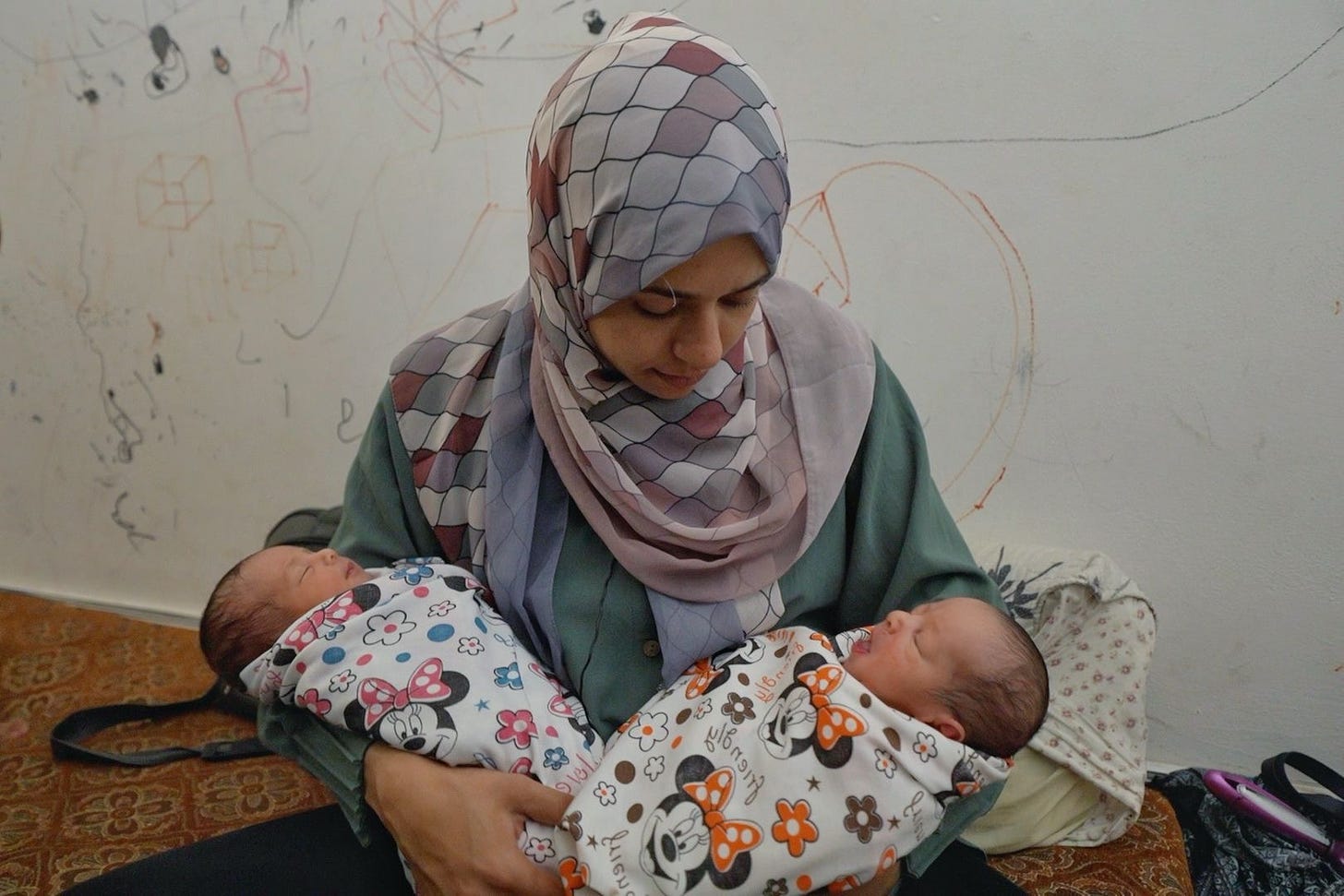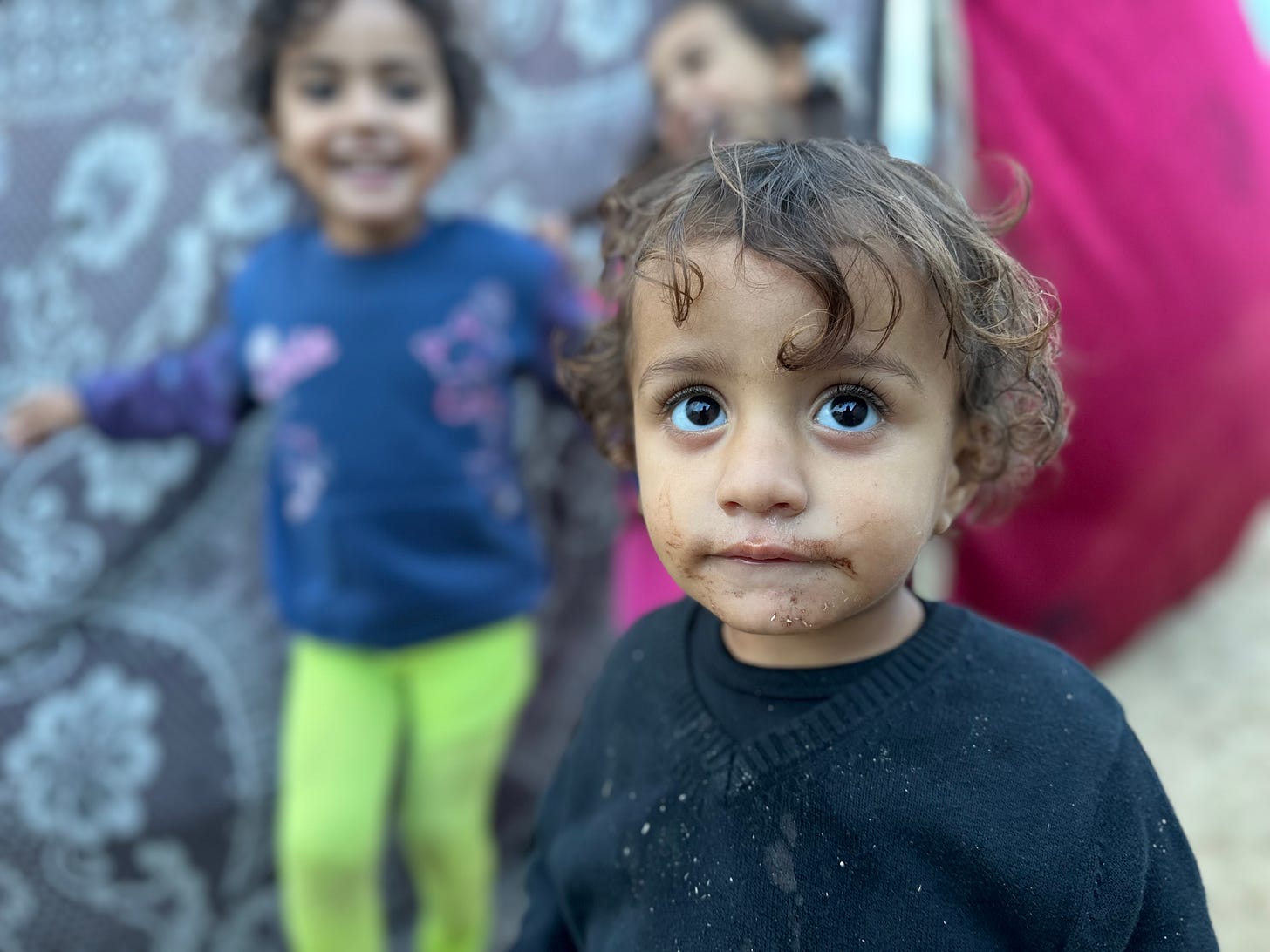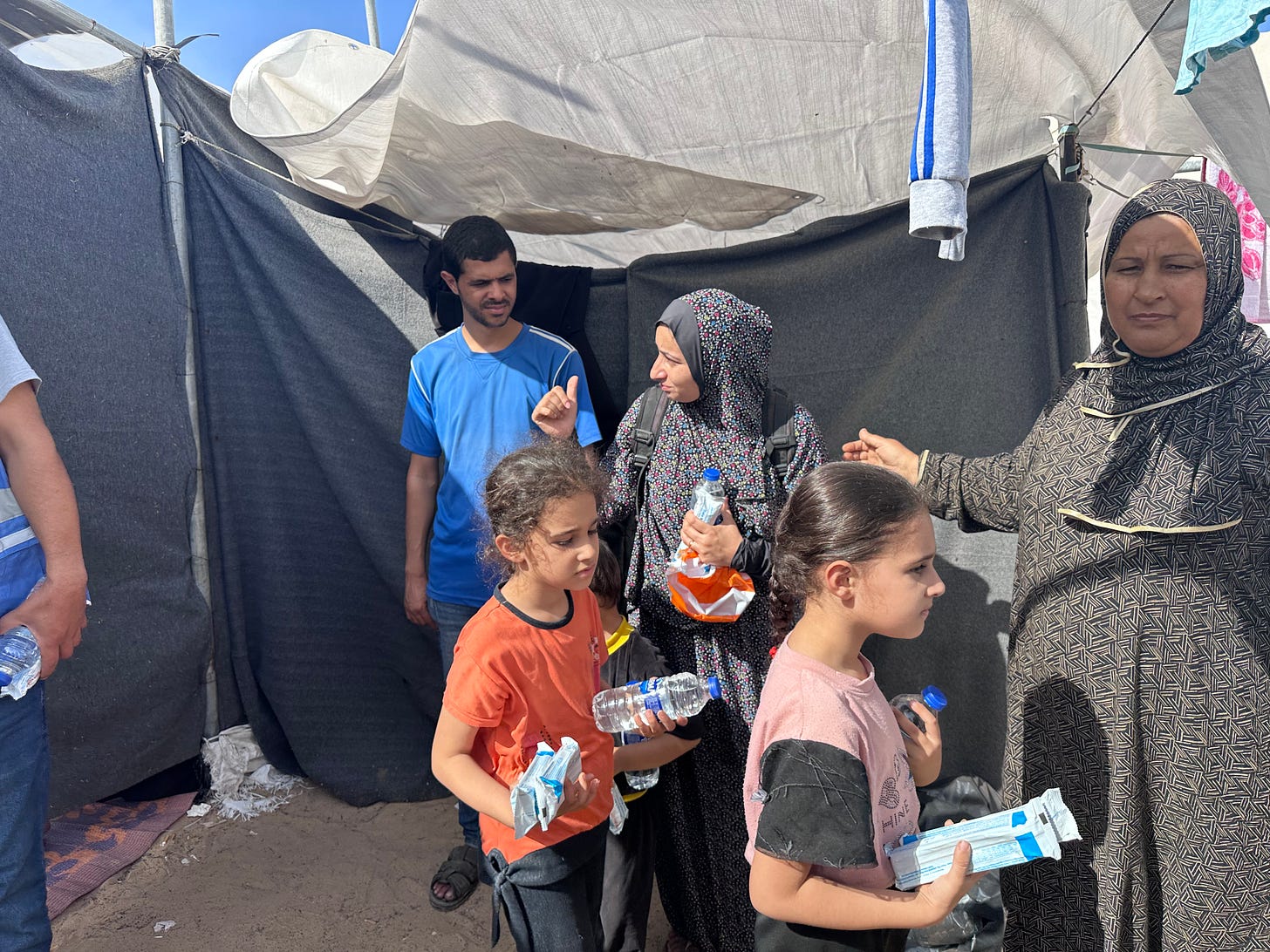Gaza – a personal account

In the last few days I have managed to make contact with a dear friend in Gaza – this is their story
In 2012 and 2013 when I spent extensive time in Gaza I met some wonderful people. People with nothing but love in their hearts who had already endured unspeakable horrors during the 2008/9 Cast Lead Operation and the 2012 Operation Pillar of Defence in November of that year. That was the first and last time I experienced personally the frenzied savagery of an Israeli “mowing the lawn”. The 2014 aggression was even worse and then came the 2023 genocide in Gaza and the West Bank during which the ongoing horrors unleashed by the Zionists has shocked even war-experienced civilians in the prison that is Gaza.
In 2012 I met a young man with a masters degree in engineering. He and his team were documenting the children that had been killed in the aggression and I joined him on some of the interviews. We met up again in 2013 and he took me to some of the poorest but most hospitable places in the Gaza enclave. We ate falafel in the Aqsa University grounds, sitting under the trees, enjoying the warm spring air. We talked often about his dreams and his vision for his work in Gaza.
A few years later, he married and he now has three smart and beautiful children. I had not been able to get in touch with him throughout the first 70 days of the Zionist pogrom. Two days ago I finally received a message from him. He had made it from the north in Tal Al Hawa to an UNRWA camp in Khan Younis in the south. He is working for UNRWA documenting the unspeakable nightmare that Gazans are living through.
This is his story, told in his words. The photos are credited to UNRWA but were taken by him. He is “terrified inside” but has to remain strong for his family, his children. I asked him about other mutual friends but he told me its impossible to get any information.
I will not share his name because Israel monitors everything and many are forced to use an Israeli SIM card because Gaza’s internet has been completely cut to prevent communication with the outside world – to provide the veil behind which the Zionist forces can commit all manner of sadistic and heinous atrocities against civilians. I will call him Hussein.
My comments are in italics:
October 11th 2023 – For the past eight years, I’ve poured my heart and soul into a dream – the dream of building my own apartment within my family’s building. I meticulously designed every corner, and in January 2022, the concrete structure was finally in place. From plumbing to electrical systems, from lighting to decoration, my journey was marked by countless decisions.
Two weeks ago, my wife and I joyously finalized the kitchen, a space she had envisioned, and we welcomed new appliances – a fridge, oven, and washing machine. The prospect of starting anew in our dream apartment, with new furniture and appliances, filled us with immense happiness.
But then, Saturday arrived [October 7th], a day that was supposed to be the beginning of our new life in our cherished space. Instead, the world around us turned dark as a war erupted, and we found ourselves in the midst of chaos and destruction.
On that Saturday, bombs fell in the Al-Karama neighborhood, partially damaging our home. Thankfully, my family and I escaped unharmed, finding refuge in my wife’s parents’ supposedly safe house. In the midst of this nightmare, I was overwhelmed by the news – my best friend and his family lost their lives, buried under the rubble of their home in Tall el Hawa. Grief threatened to consume me, but I had to remain strong for my family in this harrowing situation.
Tragedy struck again as the neighboring house of my wife’s parents was bombed without warning, leaving us amidst debris and shrapnel, our home damaged but still standing, with only minor injuries. The streets were filled with martyrs and casualties, and I couldn’t turn a blind eye to the wounded children I saw, though my priority was to ensure my own children’s safety. I tried to shield them from the harsh realities that unfolded before our eyes.
In a miraculous twist of fate, I managed to extract my car from the wreckage, and we fled, our windshield shattered, our seats covered in broken glass, escaping the relentless danger of death.
We found shelter at a relative’s house, joining thirteen other families who sought safety. Here, taking a moment to breathe after our nightmarish journey, I received the devastating news that the area where my new apartment, the place I had invested my hopes, dreams, and savings, was obliterated before I could even move in or pay its cost. The pain is indescribable, and the stolen dreams weigh heavy on my heart.
Our survival, if we can call it that, has meant preserving our vital signs, but the question remains – will we truly survive? Will we ever see our dreams realized?
I’ve always stood against violence, yearning for peace and advocating for humanity and rights. Yet, in the midst of this overwhelming helplessness and deep-seated injustice, I find myself questioning the world’s silence.
I, along with hundreds of thousands of others, are left without shelter, security, or the most basic necessities of life. In Gaza, there is no electricity, no water, no internet, and no access to healthcare. It feels like the right to life has been extinguished, all while international support and complicity with the occupation allow these crimes to persist.
With a heavy heart, Hussein, who wonders why no one asks, cares, or extends a helping hand to us.
November – We have renounced all the principles of human rights and equality we once believed in. Today, the victims exceed 3% of the total population in the Gaza Strip, yet there is no genuine movement to halt this ethnic cleansing and killing of civilians.
We are living a life unworthy even of animals, to the extent that the occupation explicitly labeled us as animals! One of their ministers even calls for dropping a nuclear bomb on us for our eradication, and no one shows any concern!!! Would this have happened if we had blue eyes, or if the occupier were a state other than Israel? We feel the injustice and oppression of double standards in the world, treating us as if we are not human.
Hussein also told me that when they took shelter in his wife’s parents house, he was having a cigarette on the balcony. He said hello to his neighbour also smoking on his balcony. Seconds later the Zionist bomb hit. The neighbour’s house was destroyed completely and Hussein saw his neighbour on the ground, decapitated.
The following is a short video Hussein sent me of the hastily erected refugee area in KYTC:
Hussein sent me the factsheet he had provide to UNRWA on the Khan Younis Training Centre (KYTC):
The Khan Younis Training Center (KYTC) is the only choice amidst a relentless storm. Driven from their homes by unceasing conflict, individuals and vulnerable groups have sought sanctuary at KYTC. Hope mingles with despair in this place, where conditions are far from ideal.
Demographics:
• Total IDPs (Internally Displaced Persons): 22,093
• Families: 4,290
• Children under 3 years old: 1,006
• Persons with Disabilities: 234
• Cancer patients: 16
• Newborn babies with their mothers: 52
• Vulnerable individuals before displacement: 561
• People with chronic diseases: Approximately 300
Living Conditions:
• Space per person: Less than 2 square meters per person.
• Toilets available: 24
• IDPs per toilet: 613
• Daily solid waste generated: Approximately 20 tons
• Food shortage: Families face dire uncertainty due to a lack of food supply.
• Privacy and Space: The per-person space is alarmingly inadequate, leading to a loss of privacy and social issues.
• Skin Diseases: Scabies and other skin conditions proliferate due to insufficient water and hygiene.
• Drinking Water: Most IDPs are left with no choice but to consume irrigation water, endangering their health.
Infrastructure and Utilities:
• Electricity: Unavailable since the first day of shelter operation.
• Power source: Generators running on fuel.
• Fuel shortage: Restricted fuel entry into Gaza Strip adds to the crisis.
• Water source: An in-house well, primarily used for irrigation and toilets, necessitates electricity for water pumping.
• Wastewater system: Overwhelmed and facing flooding issues.
• Sanitation: Toilets and bathrooms are in deplorable, unsanitary conditions.
Challenges:
• Sustainability: The shelter faces unprecedented challenges, with generators on the brink of failure.
• Support Efforts: Tireless efforts continue to provide essential support, including blanket and food distribution to address basic needs.
• Recent Interventions: In response to the catastrophic conditions, the following measures have been implemented to alleviate the crisis:
• Digging of septic tanks for sewage management.
• Installation of 6 units of precast toilets and showers.
• Distribution of plastic sheets to provide shelter from the sun and rain for those sleeping outside.
• Establishment of 3 medical points within the shelter, providing critical healthcare.
• Public Awareness and Psychosocial Support: A foundational program is in place to elevate public awareness and provide psychological and social support activities for children, offering a ray of hope in dire circumstances.
Narrative Conclusion:
The tragic reality at KYTC underscores the immense catastrophe these IDPs endure. Privacy concerns, social issues, and the catastrophic living conditions paint a grim picture, but these individuals are resilient. Their struggle for improvement persists, and they depend on the world’s compassion and support.

Young woman in KYTC with newborn twin babies.
November 3, 2023
In a solemn conversation with the team responsible for welcoming new IDPs arriving at KYTC, I was confronted with stories that pierced the depths of human suffering. The voices that shared these accounts were heavy with pain and the struggle to survive.

Children recounted stories that would haunt anyone who heard them. They spoke of witnessing the unimaginable – chickens pecking at lifeless bodies left strewn across the streets. These young souls had been exposed to horrors that no one, especially children, should ever witness.
One man’s narrative was especially poignant. Amidst his own evacuation journey to KYTC, his father died, and he buried him in Alburaj area. Continuing his trip to KYTC despite this immense personal loss was a testament to the lengths people will go to in their quest for safety.
We also witnessed horrified IDPs who entered the shelter still carrying white flags, symbols of surrender and the desperate hope for sanctuary as they passed by occupation forces.
These stories are a stark reminder of the tremendous hardships that these individuals face. They are not tales of resilience but rather stories of raw pain and the relentless drive to survive amidst the chaos of conflict.
A Tale of Resilience Amidst Silence: A Community Unites

The Mahani family.
Introducing Mohammad Nasser Mahani, a 29-year-old man who courageously faces the profound challenge of hearing impairment. Today, their arduous journey led them to the doors of KYTC, a place of refuge, accompanied by his wife, who shares the same hearing disability, and their three children.
The 15-hour expedition began at Shifa Hospital in Gaza and was fraught with perils, including separation from their extended families. What made their journey even more formidable was their struggle to communicate with the broader community.
Upon their arrival at the shelter, their path intersected with a compassionate volunteer who also happened to be well-versed in sign language. With her invaluable support, the family’s anxieties were eased, their unique situation comprehended, and despite the shelter’s congestion, their fundamental needs tended to.
Today, a tent was raised to provide them with a temporary home. But this story goes beyond the shelter’s walls. Thanks to the tireless dedication of the community engagement team, a local host family was found.
This generous family offers the Mahani family a more comfortable and private living space, a gleam of hope amid their challenging circumstances. This act of solidarity stands as a testament to the indomitable spirit of this community.
KYTC remains the primary sanctuary for displaced individuals from Gaza. Despite its limited resources, it opens its doors to those seeking refuge, even when stretched to five times its intended capacity.
In this arduous journey of survival and perseverance, the silent voices of individuals like Mohammad Nasser Mahani and his family echo the remarkable resilience of the human spirit amidst the most formidable challenges.
Video of child refugee Omar Lubbad, 8 years old:
Meet Omar Lubbad, an 8-year-old boy whose world has been shattered by the harsh realities of conflict. At KYTC, he clings to his only remaining family, his aunt, after losing everyone else – his father, mother, twin brother Hamza, grandfather, grandmother, and two uncles with their families. Their shelter was targeted, and he and his younger sister, Mariam, were the sole survivors.
Mariam, dealing with the trauma, refuses to use her earphones due to the fear of shelling sounds. She suffers from multiple fractures in her legs, with metal pins installed, and is hosted at a relative’s house in Khan Younis. Meanwhile, Omar, with his aunt, faces the stark challenges of life at KYTC.
Innocence disrupted, Omar asks heartbreaking questions about why his family didn’t take him and why fate chose him to survive. Painfully, he shares how he misses his family, especially his twin brother. He reveals a heart-wrenching ritual of closing his eyes, trying desperately to hold onto the image of his family, fearing the erosion of their memory.
And in a poignant plea, Omar asks his aunt if he can call her “mom,” seeking comfort in the midst of unimaginable loss.
“I keep my eyes closed to keep imagining my family picture; I am afraid of forgetting how they look like.” – Omar, 8 years old, a silent victim of conflict at KYTC.
Life as a refugee at KYTC
The IDPs at KYTC endure constant panic and terror, facing relentless shelling and bombing without respite. The situation mirrors the distress we experienced when compelled to evacuate our homes in Gaza, but the conditions here are far more dire, leaving us utterly exhausted.
Recently, a shelter next to us, Al Amal school, was targeted, resulting in a significant loss of life and injuries among the displaced individuals. The southern region is overwhelmed with displaced individuals, and the situation remains extremely challenging.
In the midst of power outages and the scarcity of resources in Gaza, the harsh impact of winter on displaced individuals becomes starkly evident. Compelled to rely on fires for warmth and cooking, firewood has become their way of life. They cut down trees out of necessity to illuminate the darkness, preserving the warmth in their hopeful hearts.
In a conversation with one of the displaced individuals at the shelter, he shares his poignant story:
His daily quest for firewood costs him approximately 20 shekels, in exchange for fleeting moments of warmth and a hot morsel to satisfy his hunger and that of his family. It’s a simple tale that speaks volumes about the harshness of winter in the lives of the displaced, struggling to endure amidst the storms of life and the harshness of circumstances.
While I was messaging Hussein he was constantly sending me voice messages of the relentless bombing, tank artillery fire, gun battles between the IOF and Resistance factions. He joked that life in Gaza is never “normal” – conversations are always punctuated by death and destruction. The ubiquitous drone whine permeates life on a 24/7 basis and a drone can snuff out a life in an instant.
Khan Younis is the hometown of Yahia Sinwar, one of the most iconic Resistance leaders. A deadly foe of the Zionist occupation forces. Khan Younis will be a major target even if they cannot locate Sinwar – the bloodlust will be off the scale in this city. I fear for Hussein and his family, three young children who are resilient but traumatised as are all Palestinians in Gaza and the West Bank.
For now, we have a deal to try to communicate daily. Hussein is forced to use an Israeli SIM card which only has signal in exposed and high places – this makes him an easy target for the Zionist forces. He expects the Zionist pogrom to be a protracted one, taking months – months of misery and deprivation, living in constant fear of death or mutilation, fearing for his family, his children. This is unimaginable suffering that should never have been allowed to happen and were it not for the US and UK it might have been prevented.
 TheAltWorld
TheAltWorld 
0 thoughts on “Gaza – a personal account”